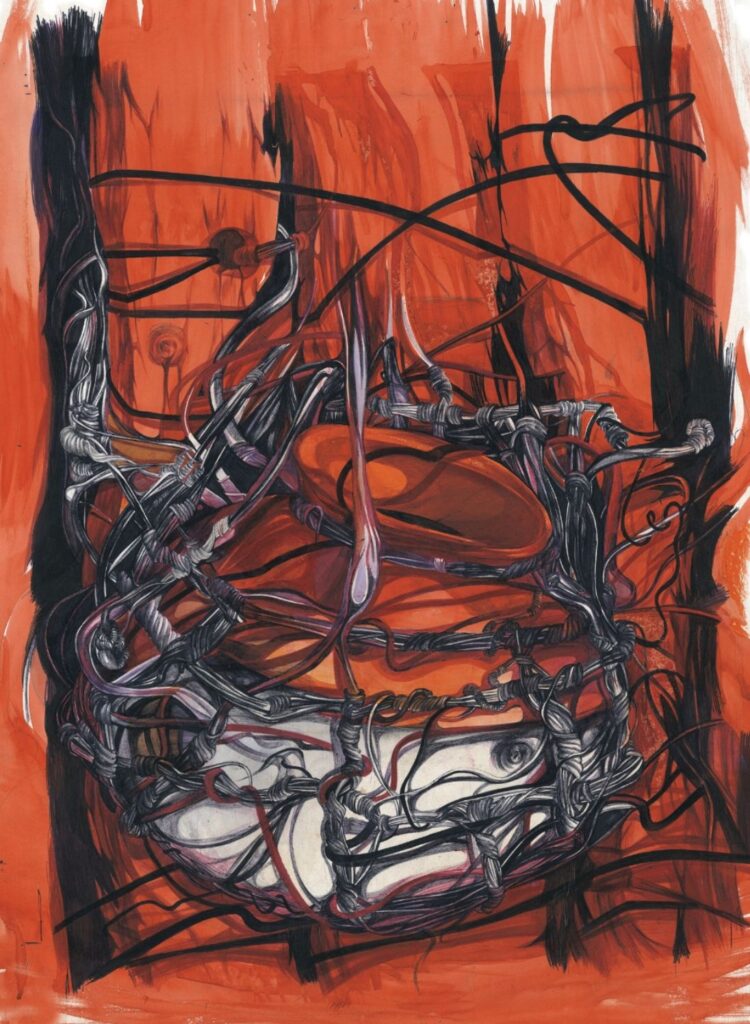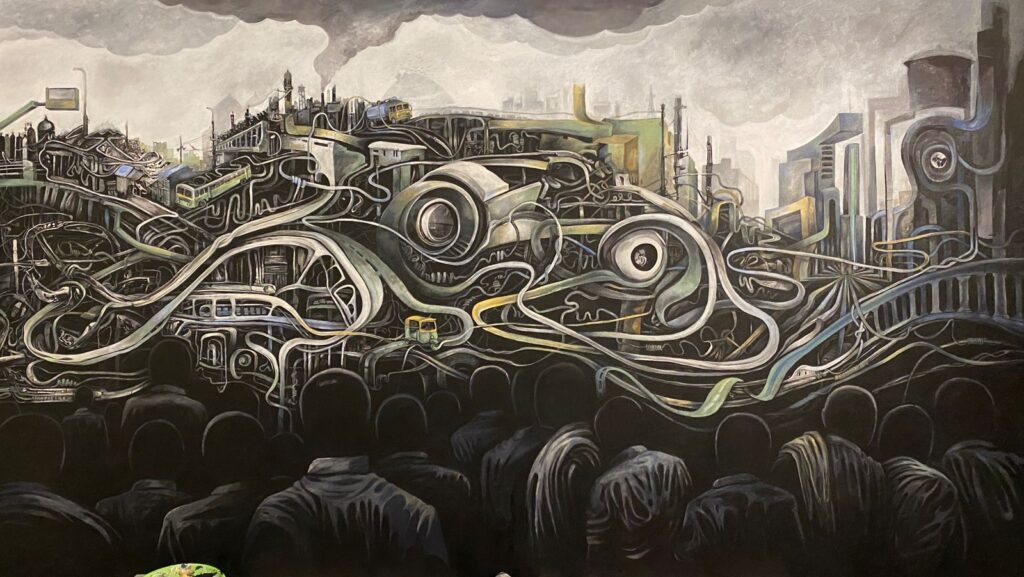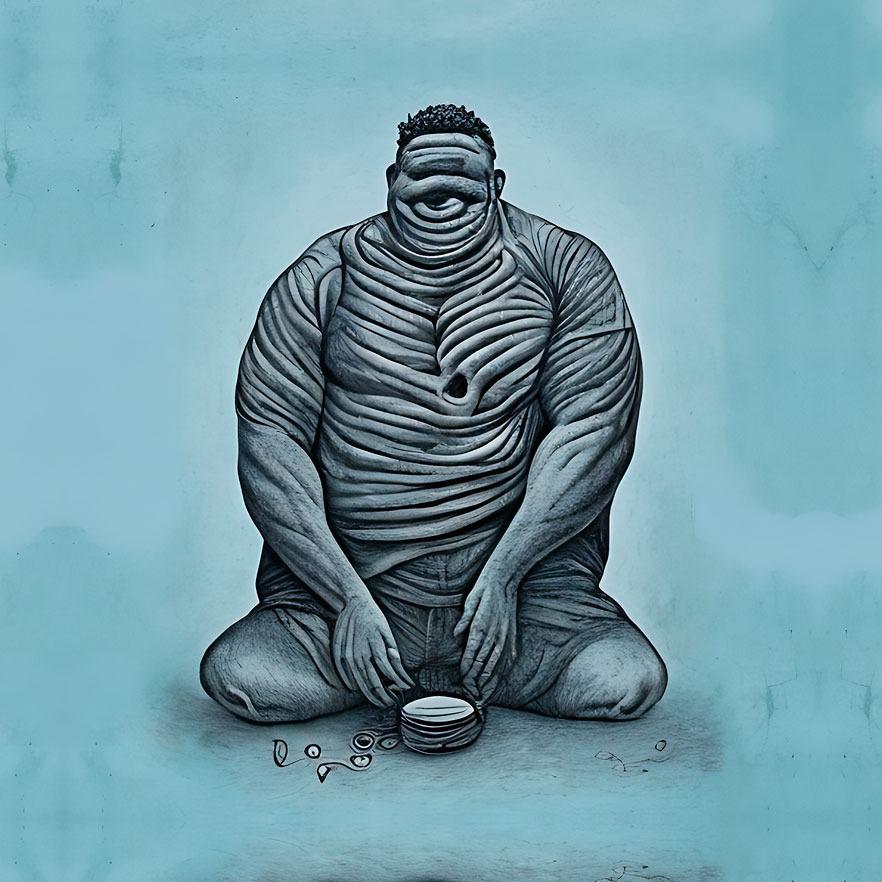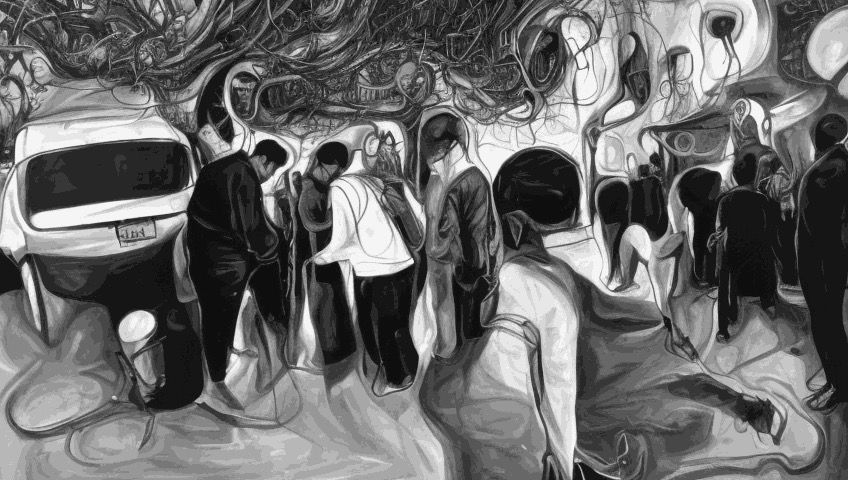P Abigail Sadhana Rao

The collaboration between AI and traditional art forms is a relatively new concept that is gaining traction in the art world. While some fear that artificial intelligence may replace human artists, others believe that it can be used as a tool to enhance and augment traditional artistic processes.
In recent years, artists have been experimenting with AI-generated art, using algorithms to create unique pieces that blur the lines between man and machine. This collaboration between AI and traditional art forms provides a new avenue for creativity, allowing artists to explore new mediums and techniques that were previously impossible.

Now coming to the AI, Assistive Intelligence exhibition taking place at the Visual Arts Gallery, Delhi challenges traditional ideas about artificial intelligence by showcasing the technology as a tool and part of the media mix in a collection of conceptual, figurative, video works and abstractions. The exhibition explores our current existence by presenting an immediate snapshot of our environment and state of mind through the use of recognisable motifs that highlight the uncertainty, anxiety, and absurdity that pervades cities worldwide.
Contrary to the belief that AI will remove the need for creators, this exhibition presents AI as an aid or another tool in an artist’s arsenal. The works on display peel back the fear surrounding these technologies, such as joblessness and technical chaos, and lay bare the creation of the human mind in our epoch. The exhibition suggests that just as humans once turned to machines to travel across the world, we now turn to algorithms to assist us in the current crises we face. Through the integration of AI and traditional mediums like acrylic, canvas, digital screens, and text, the exhibition emphasises the importance of human consciousness in navigating the future.

The man behind such an innovative collaboration, Sudesh Samaria, is a visual artist and the co-founder and former creative director of Webchutney, India’s leading digital agency. He spent decades pioneering digital technology at the intersection of creativity and commerce. Now, he is India’s first artist to employ AI as a medium for his work. Samaria’s art is an intuitive reaction to his surroundings and life experiences. He uses mixed media to create his own unique abstract language, focusing on specific shapes and compositions and their movements for long periods of time. His paintings employ AI technologies to unleash the creative process, resulting in an ongoing process of addition and subtraction until everything on the canvas co-exists and reflects a contemporary state of mind, with depth and intensity that strikes a balance.

Sudesh Samaria in all his brilliance adds an additional layer of creativity and depth to the exhibition, AI-generated prints will then be painted by traditional painters and artists. This unique collaboration showcases the compatibility and collaboration between AI and human artists. Visitors will be able to witness the intersection between technology and traditional art forms, providing a thought-provoking experience that encourages viewers to rethink the role of technology in our daily lives.
Overall, this collaboration between AI and traditional art forms represents a new frontier in the world of art, where the possibilities are endless and the boundaries are constantly being pushed.
Event Details:
AI – Assistive Intelligence
Venue: Visual Arts Gallery
Indi Habitat Centre
Lodi Colony, New Delhi
Date: 17th – 23rd March
Timings: 10 AM – 8 PM